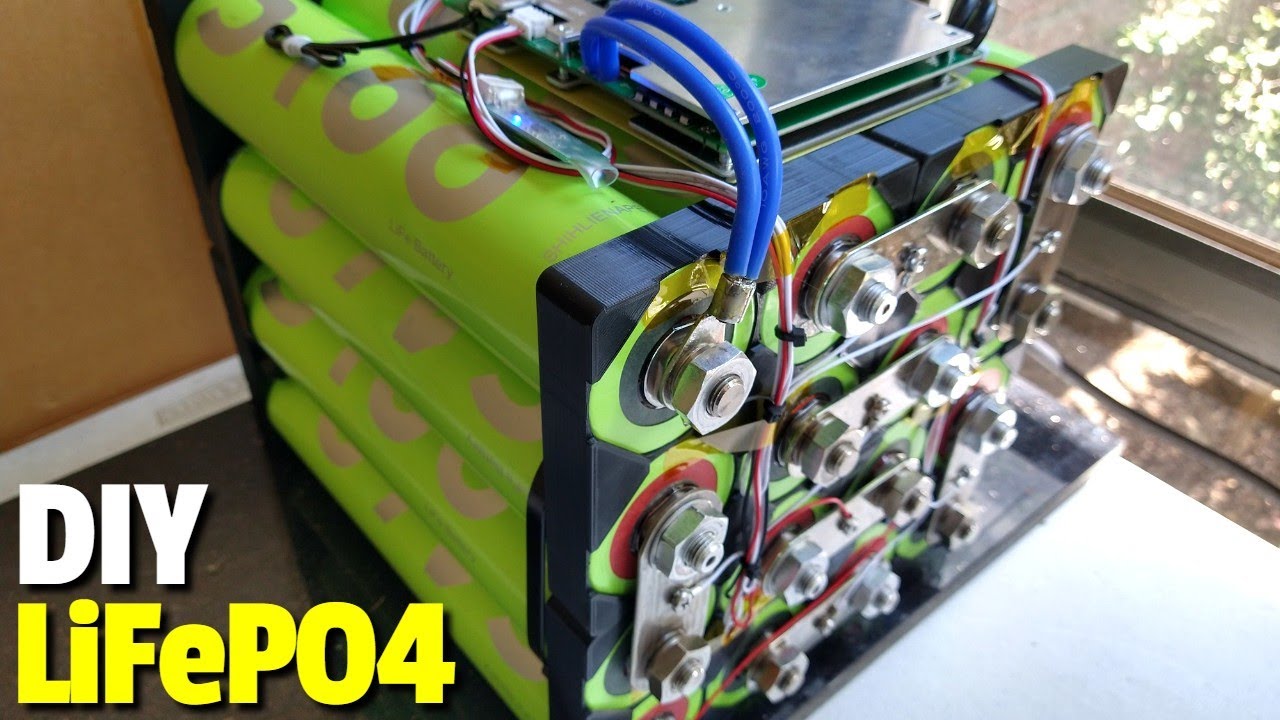What is a LiFePO4 Battery? The Complete Guide (2025)
What is a LiFePO4 battery? Simply put, it’s a type of rechargeable lithium-ion battery that uses lithium iron phosphate as its cathode material. But there’s WAY more to the story than that basic definition.
In fact, LiFePO4 batteries are quietly revolutionizing everything from electric vehicles to home solar systems.
And in this guide, as a professional LiFePO4 battery pack manufacturer, I’m going to show you exactly what makes these batteries so special.
You’ll learn how they work, why they’re safer than other battery types, and whether they’re right for your specific needs.
Let’s dive in.

What Exactly is a LiFePO4 Battery?
LiFePO4 stands for Lithium Iron Phosphate.
(Sometimes you’ll also see it written as “LFP” for short)
These batteries belong to the lithium-ion family. But unlike traditional lithium-ion batteries that use cobalt or nickel in their cathodes, LiFePO4 batteries use iron phosphate.
Here’s the thing:
This seemingly small change in battery chemistry makes a HUGE difference in performance.
The basic components include:
Cathode: Lithium iron phosphate (LiFePO4)
Anode: Usually graphitic carbon
Electrolyte: Lithium salt dissolved in organic solvent
Separator: Prevents short circuits between electrodes
But what really matters is how these components work together to create one of the safest and most durable battery technologies available today.
How Do LiFePO4 Batteries Actually Work?
The magic happens through the movement of lithium ions.
During charging, lithium ions are extracted from the iron phosphate cathode and inserted into the carbon anode. During discharge, the process reverses.
This back-and-forth movement of ions is what generates the electrical current that powers your devices.
Pretty straightforward, right?
But here’s where it gets interesting:
The iron phosphate structure (called an “olivine” structure) is incredibly stable. Way more stable than other lithium-ion chemistries.
This stability is what gives LiFePO4 batteries their legendary safety record and long lifespan.
Why LiFePO4 Batteries Are Taking Over
Let me be clear about something:
LiFePO4 isn’t just another battery technology. It’s a game-changer.
Here’s why:
Superior Safety
This is the big one.
Traditional lithium-ion batteries can experience thermal runaway – a dangerous condition where the battery overheats and can catch fire or even explode.
LiFePO4 batteries? They’re inherently much safer.
The iron phosphate chemistry doesn’t release oxygen when it breaks down, which dramatically reduces fire risk. In fact, thermal runaway only occurs at temperatures exceeding 270°C (compared to 150-200°C for other lithium-ion types).
Incredible Cycle Life
Most batteries start losing capacity after a few hundred charge cycles.
LiFePO4 batteries can handle 3,000 to 10,000+ cycles while maintaining 80% of their original capacity.
In other words:
If you charged and discharged a LiFePO4 battery once per day, it could last over 10 years.
Deep Discharge Capability
Here’s something cool:
You can discharge a LiFePO4 battery down to nearly 0% without damaging it. Try that with a lead-acid battery and you’ll destroy it.
This means you can actually use almost 100% of the battery’s stored energy.
Stable Voltage Output
LiFePO4 batteries maintain consistent voltage throughout their discharge cycle. This means your devices get steady power until the battery is nearly empty.
No more dimming lights or slowing motors as the battery drains.
LiFePO4 vs. Other Battery Types
Let me break down how LiFePO4 stacks up against the competition:
LiFePO4 vs. Lead-Acid
This isn’t even close.
LiFePO4 wins in almost every category:
Lifespan: 10x longer cycle life
Weight: 1/3 the weight for same capacity
Usable capacity: 100% vs. 50%
Charging speed: Much faster
Maintenance: Zero vs. regular maintenance required
The only advantage of lead-acid? Lower upfront cost. But when you factor in replacement costs over time, LiFePO4 is actually cheaper.
LiFePO4 vs. Other Lithium-Ion (NMC, LCO)
This comparison is more nuanced.
LiFePO4 advantages:
Superior safety profile
Longer cycle life
Better high-temperature performance
Lower cost (no expensive cobalt)
More environmentally friendly
NMC/LCO advantages:
Higher energy density (more power in smaller package)
Higher voltage per cell
Bottom line? If you need maximum energy density (like in a Tesla Model S), NMC might be better. But for most applications, LiFePO4’s safety and longevity win out.
Real-World Applications Where LiFePO4 Shines
LiFePO4 batteries aren’t just theoretical. They’re powering real applications right now in 2025:
Electric Vehicles
Major automakers are switching to LiFePO4 for standard-range EVs:
Tesla Model 3/Y Standard Range
Ford F-150 Lightning
BYD vehicles
Many commercial delivery trucks
Why? The combination of safety, longevity, and cost-effectiveness makes perfect sense for most drivers.
Solar Energy Storage
This is where LiFePO4 really dominates.
Home solar systems need batteries that can:
Handle daily charge/discharge cycles
Last 10+ years
Work safely in various weather conditions
Provide reliable backup power
LiFePO4 checks all these boxes.
Marine and RV Applications
Boat and RV owners love LiFePO4 batteries because they’re:
Lightweight (crucial for mobile applications)
Maintenance-free
Safe in enclosed spaces
Capable of deep cycling
Backup Power Systems
For critical applications like hospitals, data centers, and telecommunications, the safety and reliability of LiFePO4 makes it an obvious choice.
The Technical Specs That Matter
Here are the key performance characteristics you should know:
Energy Density: 90-120 Wh/kg (lower than other lithium-ion but sufficient for most uses)
Cycle Life: 3,000-10,000+ cycles to 80% capacity
Voltage: 3.2V per cell (compared to 3.6-3.7V for other lithium-ion)
Temperature Range: Operates effectively from -20°C to 60°C
Power Density: Can deliver high discharge rates (often 3C or higher)
Charging: Fast charging capable, some can charge to 80% in 12 minutes
Are There Any Downsides?
Let’s be honest here.
No technology is perfect, and LiFePO4 has some limitations:
Lower Energy Density
LiFePO4 batteries are larger and heavier than other lithium-ion types for the same amount of stored energy.
If you need maximum energy in minimum space (like in a smartphone), other chemistries might be better.
Higher Initial Cost
LiFePO4 batteries cost more upfront than lead-acid alternatives.
However, the total cost of ownership is usually lower due to their longer lifespan.
Cold Weather Performance
Like most batteries, LiFePO4 capacity decreases in very cold temperatures.
That said, many modern LiFePO4 batteries include heating elements to address this issue.
How to Choose the Right LiFePO4 Battery
Shopping for a LiFePO4 battery? Here’s what to look for:
Capacity (Ah)
This determines how long your battery will run. Match this to your actual energy needs, not your maximum theoretical needs.
Voltage Configuration
Most systems use 12V, 24V, or 48V configurations. Make sure the battery matches your system voltage.
Built-in Battery Management System (BMS)
A good BMS protects against overcharging, over-discharging, and thermal issues. Don’t buy a LiFePO4 battery without one.
Certification
Look for batteries with proper safety certifications (UL, CE, UN38.3) for your application.
Warranty
Quality LiFePO4 batteries should come with at least a 5-year warranty. Many offer 10+ years.
The Future of LiFePO4 Technology
Here’s what’s coming in 2025 and beyond:
Improved Energy Density: Manufacturers are achieving up to 205 Wh/kg with new designs.
Faster Charging: 4C charging (full charge in 15 minutes) is becoming common.
Better Cold Weather Performance: New formulations work better in freezing temperatures.
Enhanced Recycling: Improved processes for recovering and reusing materials.
Cost Reductions: Scaled manufacturing is driving prices down further.
Bottom Line: Is LiFePO4 Right for You?
LiFePO4 batteries make sense if you need:
Long-term reliability
Safety in critical applications
Frequent deep cycling
Low maintenance operation
Stable power output
They might NOT be the best choice if you need:
Maximum energy density in minimum space
The absolute lowest upfront cost
Very high voltage applications
For most energy storage applications in 2025, LiFePO4 offers the best combination of safety, performance, and value.
That’s why everyone from Tesla to your neighbor with solar panels is choosing LiFePO4.
What is a LiFePO4 battery? It’s the future of safe, reliable energy storage – and that future is here now.








